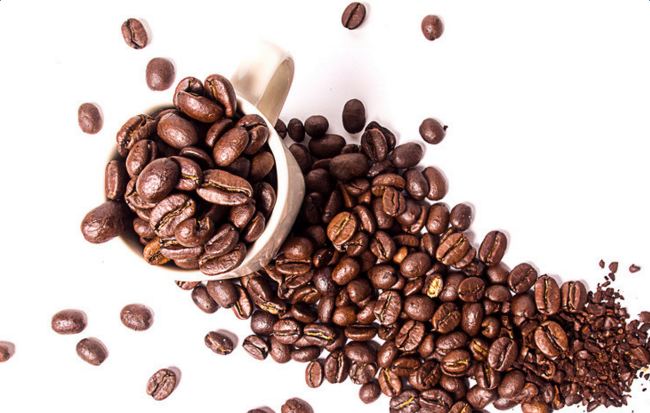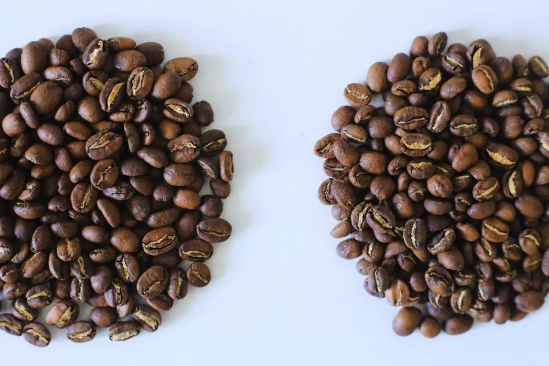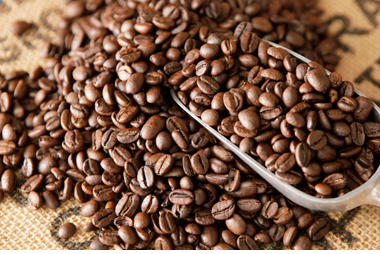Do you know why coffee tastes a little sour?
Many coffee drinkers sometimes ask, "is your coffee sour?" Or "I don't like sour coffee" and so on, let's understand the secret of it.
The sour ingredients in raw coffee beans are citric acid, malic acid and quinic acid. Phosphoric acid, etc., but this is not the sour taste we feel when we drink coffee. The sour taste we taste mainly comes from the acid produced in the baking process.

The coffee tastes a little sour
When roasting coffee beans, some of the ingredients in the beans will react to form new acids. A more representative example is that chlorogenic acid is decomposed to quinic acid, and sugars are decomposed to form volatile formic acid and acetic acid.
Coffee beans
During roasting, raw coffee beans undergo many chemical changes, especially in the middle of roasting (which is lower than the mild roasting on the market), and the sour taste becomes stronger and stronger as the roasting degree deepens. However, after high temperature treatment, the formed acid begins to decompose again, and after this stage, with the deepening of the baking degree, the sour taste becomes lighter and lighter.
The composition of coffee beans
Baked beans contain the most acid, which is quinic acid that increases with the deepening of baking. It is not only high in content, but also strong in sour taste, so it is the main source of sour taste of coffee. Other things such as citric acid, malic acid and acetic acid are also high in coffee. The strength and properties of all kinds of acids are different, although they are all sour, but the composition is actually very complex.
The weight and ratio of sour ingredients in roasted beans have a lot to do with the composition of coffee beans. What kind of raw materials are chosen and the way of sour taste release will be different. For example, the carbohydrate content of Carneflora seed which is easy to form acetic acid is low, so it does not form a volatile and irritating sour taste.
A cup of hot coffee
In addition, the way of releasing sour taste varies according to the state. There is a substance in quinic acid that can not only emit the sour taste, but also hide it. The reason why the brewed coffee becomes more and more sour is that the sour taste that was originally hidden slowly spreads out over time.
Important Notice :
前街咖啡 FrontStreet Coffee has moved to new addredd:
FrontStreet Coffee Address: 315,Donghua East Road,GuangZhou
Tel:020 38364473
- Prev

Let's take a look at nine aspects to identify the good and bad coffee beans! one
People must be most concerned about the quality of coffee, so how to distinguish the advantages and disadvantages of coffee? This starts from the source of coffee, nine aspects to identify the quality of coffee beans, let's take a look: first, the trap of 100% pure coffee. This is the most obvious hint, because 100% pure coffee does not indicate quality, but only means higher profits and better anti-parasite ability.
- Next

10 common sense that you should pay attention to when drinking coffee
Many white-collar workers like to drink coffee to refresh themselves, but you know, there are some things to pay attention to when drinking coffee. So, what are the points for attention in drinking coffee? Let's take a look at it. Many people like to drink coffee now, because the caffeine in coffee is the most noticeable of all the ingredients in coffee. The greatest bitterness in coffee flavor is caused by caffeine. Coffee
Related
- Beginners will see the "Coffee pull flower" guide!
- What is the difference between ice blog purified milk and ordinary milk coffee?
- Why is the Philippines the largest producer of crops in Liberia?
- For coffee extraction, should the fine powder be retained?
- How does extracted espresso fill pressed powder? How much strength does it take to press the powder?
- How to make jasmine cold extract coffee? Is the jasmine + latte good?
- Will this little toy really make the coffee taste better? How does Lily Drip affect coffee extraction?
- Will the action of slapping the filter cup also affect coffee extraction?
- What's the difference between powder-to-water ratio and powder-to-liquid ratio?
- What is the Ethiopian local species? What does it have to do with Heirloom native species?

